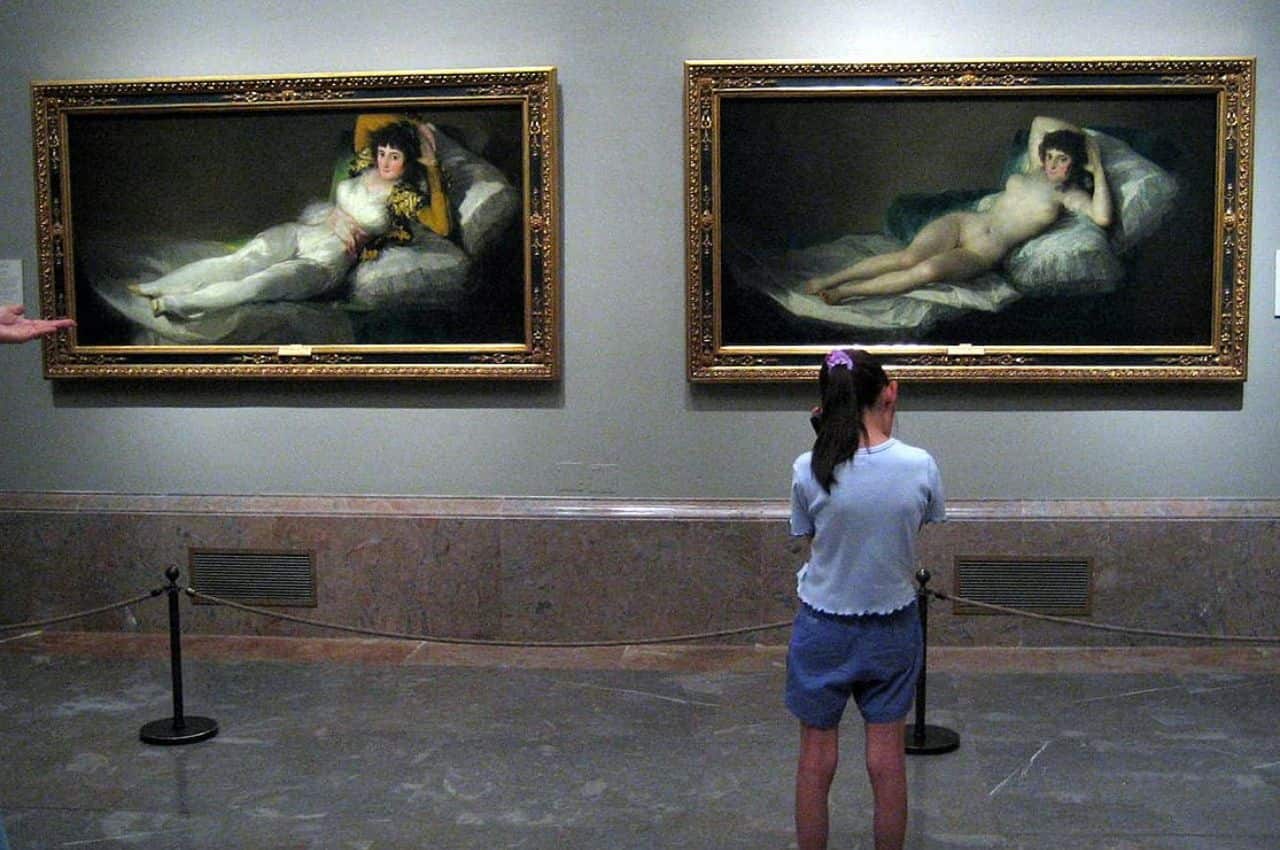La Maja Vestida, translated as “The Clothed Maja,” is a renowned painting by the Spanish artist Francisco Goya. Created between 1800 and 1808, this masterpiece stands as a significant work in the history of art, both for its technical brilliance and its provocative subject matter. La Maja Vestida is often discussed in tandem with its counterpart, La Maja Desnuda (“The Nude Maja”), as they form a fascinating pair that explores themes of beauty, sensuality, and societal norms.
Historical Context and Background
Francisco Goya, one of Spain’s most celebrated artists, painted La Maja Vestida during a tumultuous period in Spanish history. The early 19th century was marked by political instability, social upheaval, and the Napoleonic Wars. Goya himself was a court painter to the Spanish crown and a keen observer of the changing political landscape. His works often reflect the complexities and contradictions of his time.
La Maja Vestida was commissioned by Manuel de Godoy, the Prime Minister of Spain and a powerful figure in the Spanish court. Godoy was known for his controversial political maneuvers and personal life, which included numerous romantic liaisons. The identity of the model for La Maja Vestida remains a topic of speculation. Some art historians believe she may have been Pepita Tudó, Godoy’s mistress, while others suggest she could be the Duchess of Alba, a prominent noblewoman and rumored lover of Goya.
Artistic Analysis
La Maja Vestida is a striking portrait of a woman reclining on a luxurious couch, dressed in a white blouse, a dark skirt, and a green sash. Her pose is relaxed yet confident, and her direct gaze engages the viewer with an air of self-assurance. The painting’s composition is carefully balanced, with the model’s body forming a gentle curve that draws the eye across the canvas.
Goya’s mastery of light and shadow is evident in La Maja Vestida. The soft, diffused lighting creates a sense of depth and volume, highlighting the textures of the fabric and the model’s skin. The rich, warm tones of the background contrast with the cool, muted colors of the clothing, enhancing the overall visual impact.
One of the most intriguing aspects of La Maja Vestida is its relationship with La Maja Desnuda. The two paintings are nearly identical in composition, with the primary difference being the presence or absence of clothing. This deliberate pairing invites comparisons and raises questions about the nature of beauty and modesty. While La Maja Desnuda was considered scandalous for its time, La Maja Vestida offers a more socially acceptable portrayal of the same model, clothed in elegant attire.
Symbolism and Interpretation
La Maja Vestida can be interpreted in various ways, depending on one’s perspective. Some view it as a celebration of feminine beauty and sensuality, capturing the essence of the Romantic era’s fascination with individual expression and emotional depth. Others see it as a commentary on the duality of public and private personas, highlighting the contrast between the outer facade and inner desires.
The painting also reflects Goya’s evolving artistic style and his departure from traditional conventions. By presenting the same model in both clothed and nude forms, Goya challenges societal norms and encourages viewers to reconsider their preconceived notions of decency and propriety. This bold approach underscores Goya’s role as a pioneering artist who pushed the boundaries of his craft.
Legacy and Influence
La Maja Vestida, along with its companion piece, has left an indelible mark on the art world. The paintings are housed in the Museo del Prado in Madrid, where they continue to captivate audiences from around the globe. Goya’s innovative techniques and thought-provoking themes have inspired countless artists and scholars, cementing his legacy as a master of both portraiture and social commentary.
In modern times, La Maja Vestida remains a subject of fascination and study. Its enduring appeal lies in its ability to evoke a range of emotions and interpretations, making it a timeless work of art that transcends its historical context. Whether admired for its aesthetic beauty, analyzed for its cultural significance, or appreciated for its technical prowess, La Maja Vestida stands as a testament to Goya’s genius and the enduring power of art to provoke thought and inspire wonder.
Conclusion
La Maja Vestida is more than just a painting; it is a window into the complexities of human nature and society. Through Goya’s skillful brushwork and keen insight, this masterpiece invites us to explore the interplay between appearance and reality, modesty and sensuality, and tradition and innovation. As we continue to admire and study La Maja Vestida, we are reminded of the timeless nature of great art and its ability to speak to us across the ages.






